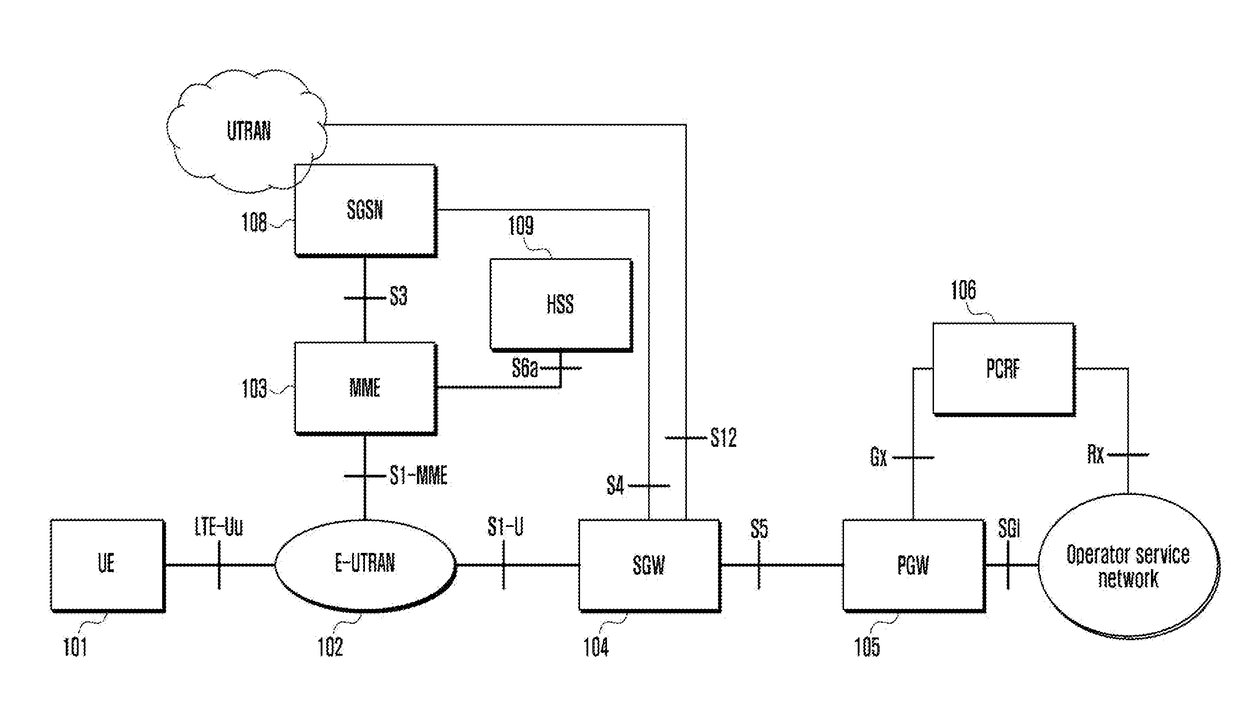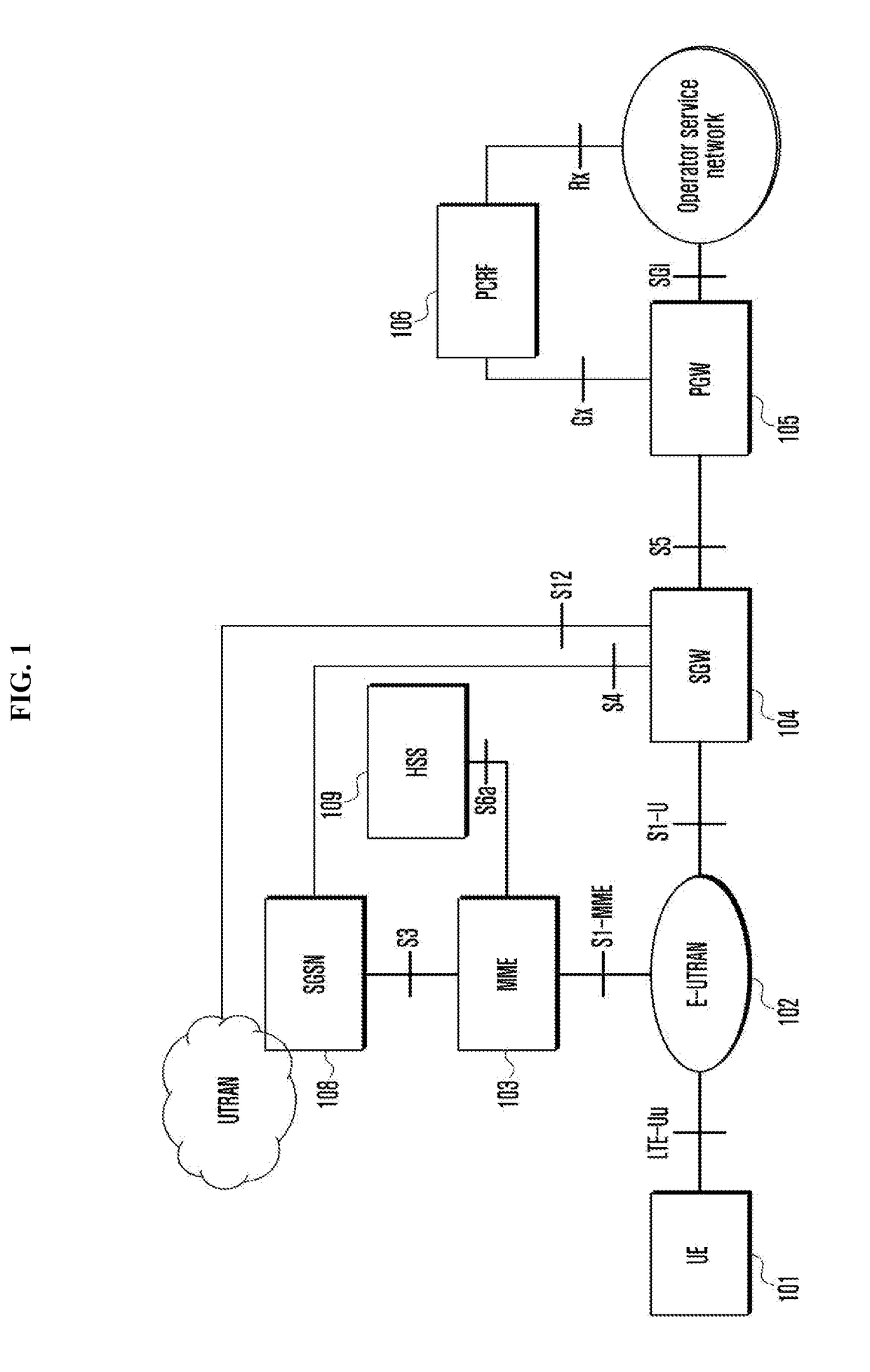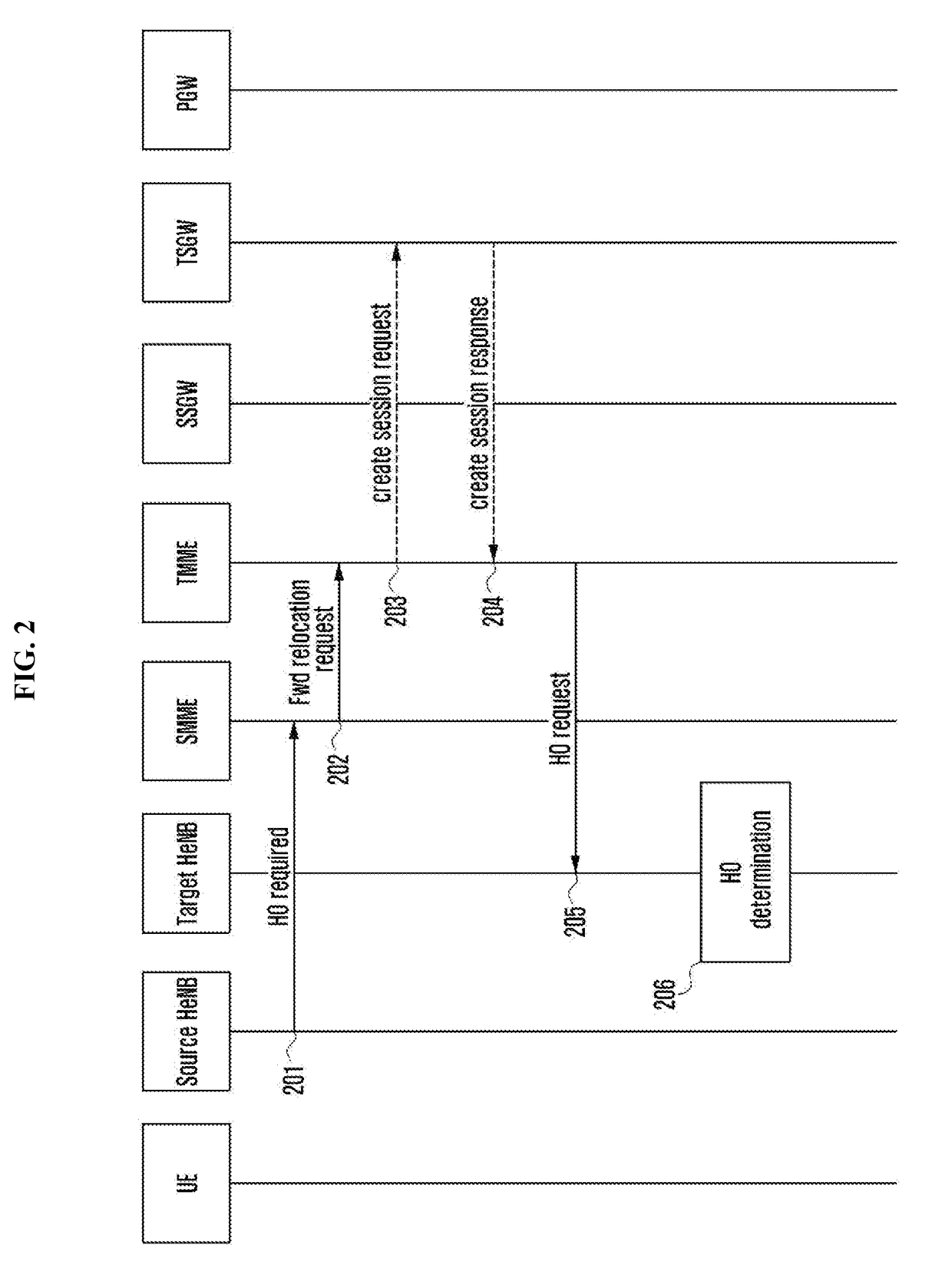Method for determining access control
- Summary
- Abstract
- Description
- Claims
- Application Information
AI Technical Summary
Benefits of technology
Problems solved by technology
Method used
Image
Examples
first example
A First Example
[0068]In this example, suppose that an S1 handoff happens to the UE, a following manner may be adopted to determine whether service continuity of the LIPA / SIPTO service supported by the local network can be maintained:
[0069]Determining the type of the current service according to an identifier corresponding to an APN of the current service;[0070]if it is the LIPA service and the UE moves out of the local network, the network side deactivates the LIPA service;[0071]if it is the SIPTO service and the UE moves out of the local network, determine whether to keep the service continuity according to the operator's policy. Furthermore, if there is no connection between the LGW connected with a source NodeB and a target NodeB, the service is disconnected.
[0072]FIG. 2 is a schematic diagram illustrating an S1 handoff according to a first example of the present disclosure. As shown in FIG. 2, source HeNB denotes a source NodeB, Target HeNB denotes a target NodeB, SMME denotes a...
second example
[0087]This example is a substitute solution of the first example.
[0088]FIG. 3 is a schematic diagram illustrating an S1 handoff according to the second example of the present disclosure. The handoff procedure includes the following operations.
[0089]Blocks 301 to 304 are similar to those of blocks 201 to 204 in the first example, and will not be repeated herein.
[0090]At block 305, the target MME transmits a handoff request message to the target NodeB. The message carries indication information requiring the target NodeB to provide the IP address of the LGW that the target NodeB can be connected with and / or the LHN ID of the local network that the target NodeB is located. The indication information is optional.
[0091]At block 306, the target NodeB provides the IP address of the LGW that the target NodeB can be connected with and / or the LHN ID of the local network that the target NodeB is located to the target MME according to the indication information transmitted by the target MME.
[00...
third example
A Third Example
[0099]FIG. 4 is a schematic diagram illustrating an S1 handoff according to the third example of the present disclosure. The handoff procedure includes the following operations.
[0100]Blocks 401 to 404 are similar to those of blocks 201 to 204 and will not be repeated herein.
[0101]At block 405, the target MME performs different handoff actions with respect to different APNs, i.e., adopts different access control determination methods for the SIPTO service and the LIPA service.
[0102]At block 406, if it is determined according to the APN that the current service of the handoff UE is LIPA@LN, the target MME transmits a handoff request to the target NodeB, wherein the message carries the LHN ID of the local network where the source NodeB is located and / or the IP address of the LGW connected with the source NodeB. The target NodeB performs the access control determination. In particular, the target NodeB compares the LHN ID of the local network where the target NodeB is loc...
PUM
 Login to View More
Login to View More Abstract
Description
Claims
Application Information
 Login to View More
Login to View More - R&D
- Intellectual Property
- Life Sciences
- Materials
- Tech Scout
- Unparalleled Data Quality
- Higher Quality Content
- 60% Fewer Hallucinations
Browse by: Latest US Patents, China's latest patents, Technical Efficacy Thesaurus, Application Domain, Technology Topic, Popular Technical Reports.
© 2025 PatSnap. All rights reserved.Legal|Privacy policy|Modern Slavery Act Transparency Statement|Sitemap|About US| Contact US: help@patsnap.com



